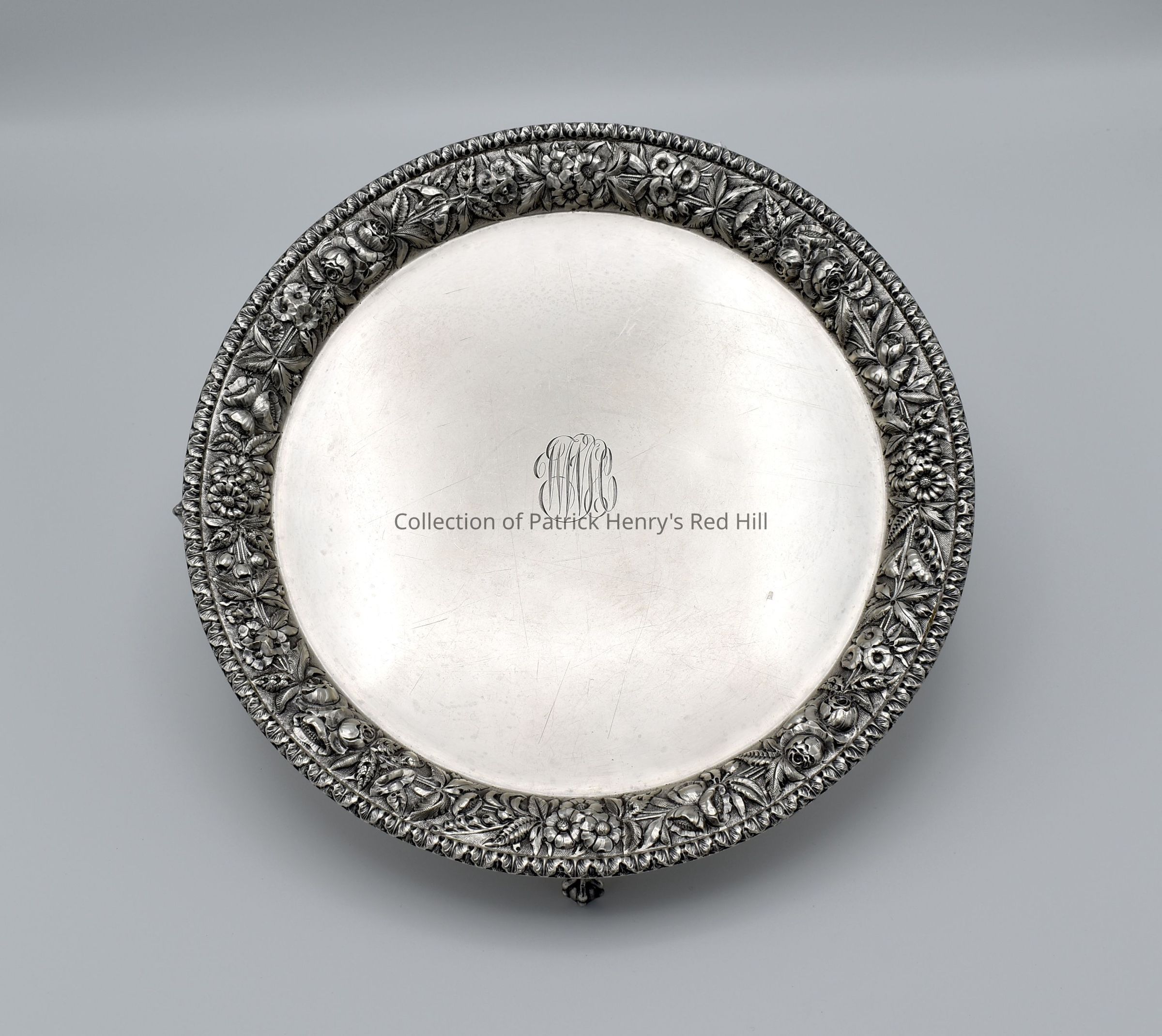Notes
This repoussé salver is part of a set of two silver pieces belonging to William Wirt Henry (1831–1900), a grandson of Patrick Henry who lived at Red Hill.
A salver is a flat, heavy tray of silver, other metal, or glass used for carrying or serving glasses, cups, and dishes at a table. In a royal or noble household, the fear of poisoning led to the custom of tasting the food or beverage before it was served to the master and his guests. This practice was known as the assay of meat and drink, and in Spanish, it was referred to as "salva."
The silversmithing company, Samuel Kirk & Son, produced this bowl between 1890 and 1896. It is made of 925/1000 silver, which the company first produced in 1886. Samuel Kirk (1793–1872) established his company in Baltimore, Maryland, and is best known for introducing repoussé—a metalworking technique in which a malleable metal is shaped by hammering from the reverse side to create a design in low relief—to the United States.
William Wirt Henry likely purchased this salver and may have used it at Red Hill. Henry owned several other silver hollowware pieces by the Kirk company, including a Monteith bowl (76.122.3) and a gifted pitcher (76.122.2).
Following the death of William Wirt Henry, the bowl passed to his daughter, Lucy Gray Henry Harrison (1857–1944). It remained with Mrs. Harrison at Red Hill until her death in 1944. The Patrick Henry Memorial Foundation purchased this bowl from Elizabeth Kerper (1873–1964), executrix to the Lucy Harrison estate, on June 30, 1945.
